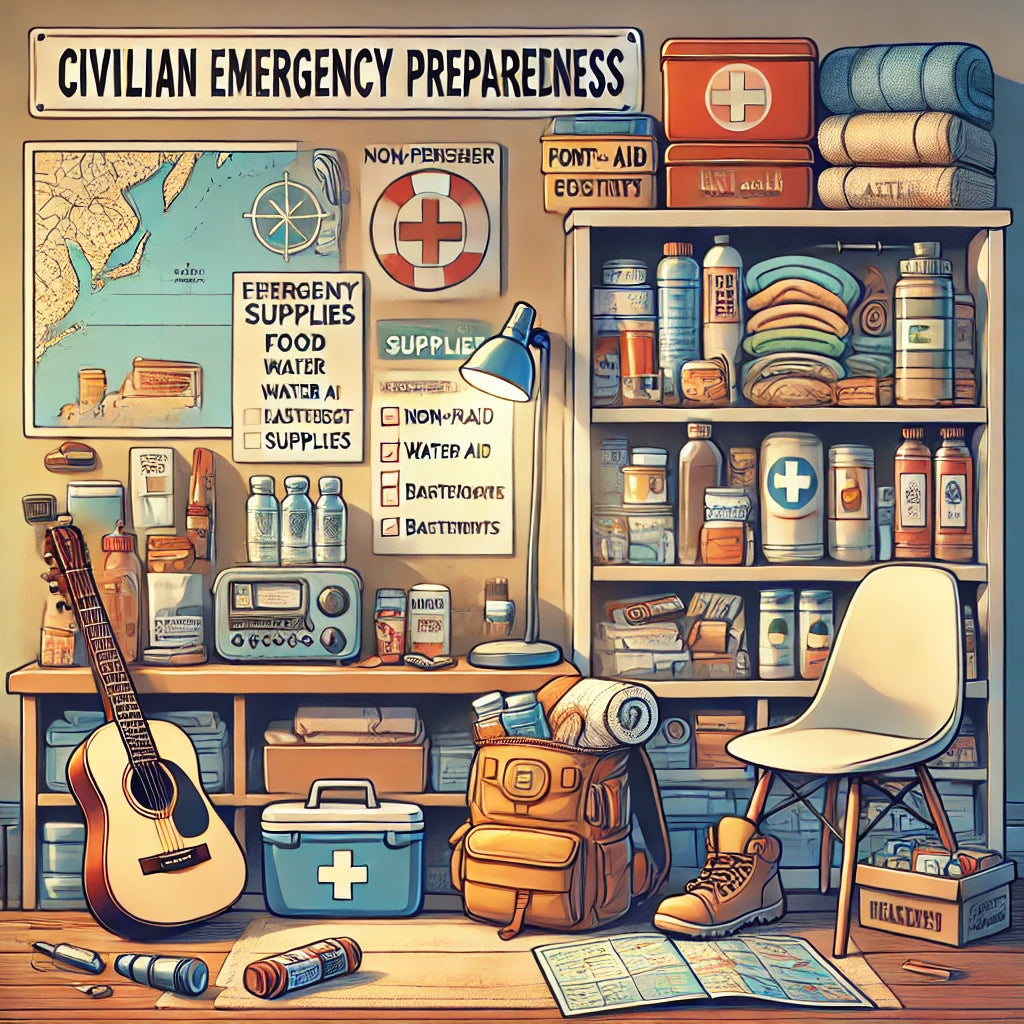Preparing for a potential war involves a multifaceted approach that encompasses personal safety, community preparedness, and understanding the broader context of conflict. Here are some steps you might consider:
1. Stay Informed
- Monitor News: Keep up with reliable news sources to understand the geopolitical situation.
- Understand Threats: Learn about the specific threats that could lead to conflict in your region.
2. Emergency Planning
- Create an Emergency Plan: Outline steps for evacuation, communication, and shelter.
- Know Safe Locations: Identify places in your home and community that are safe during conflicts.
3. Stocking Supplies
- Food and Water: Store non-perishable food and clean drinking water for at least a few weeks.
- Medical Supplies: Assemble a first aid kit and any necessary medications.
- Other Essentials: Include items like flashlights, batteries, and sanitation supplies.
- Water Filters
4. Community Engagement
- Join Local Groups: Participate in community preparedness groups or local organizations focused on disaster response.
- Build Connections: Foster relationships with neighbors to create a support network.
5. Self-Defense and Skills Training
- Learn Basic Self-Defense: Consider taking self-defense classes.
- Emergency Skills: Learn first aid, CPR, and basic survival skills.
6. Mental Preparedness
- Stay Calm: Practice stress-reduction techniques to maintain composure in crisis situations.
- Educate Yourself: Understand the psychological aspects of conflict and how to cope with fear and uncertainty.
7. Legal and Financial Preparedness
- Document Important Information: Keep copies of important documents (e.g., identification, insurance).
- Financial Planning: Ensure you have access to cash and understand your financial situation.
- Keep important documents in water proof cases.
8. Evacuation Routes and Transportation
- Plan Routes: Identify multiple routes in case of evacuation.
- Maintain Transportation: Ensure your vehicle is in good condition and fueled.
9. Stay Connected
- Communication Plan: Establish a way to communicate with family and friends during emergencies.
- Social Media Awareness: Use platforms to receive alerts and updates.
10. Strengthen Home Security
- Reinforce Your Home: Secure doors, windows, and other entry points. Consider installing an alarm system and other security measures like surveillance cameras.
- Safe Room: If possible, designate a room in your house that is well-protected (e.g., basement or an interior room) to serve as a shelter
Conclusion
While the prospect of war is daunting, being prepared can enhance personal safety and community resilience. Focus on practical steps that address both immediate needs and long-term preparedness.
Source: American Red Cross, FEMA and other sites.


